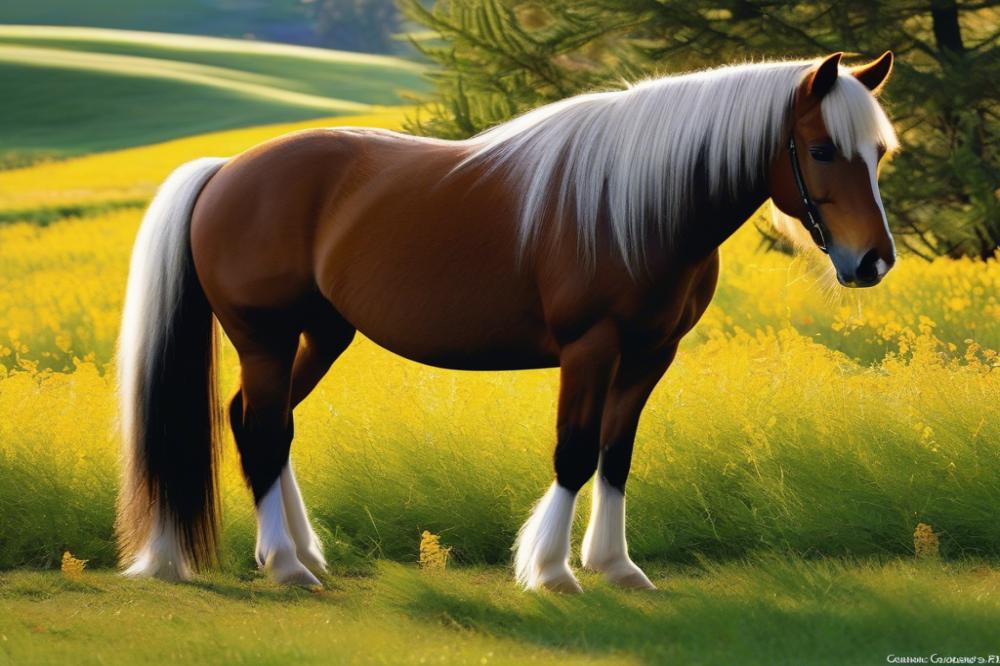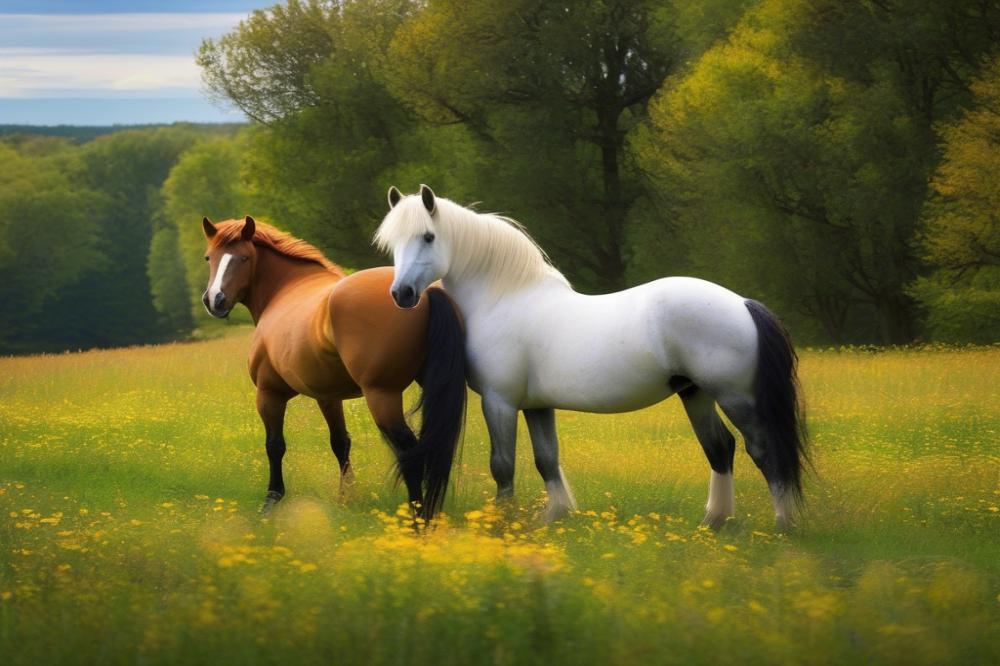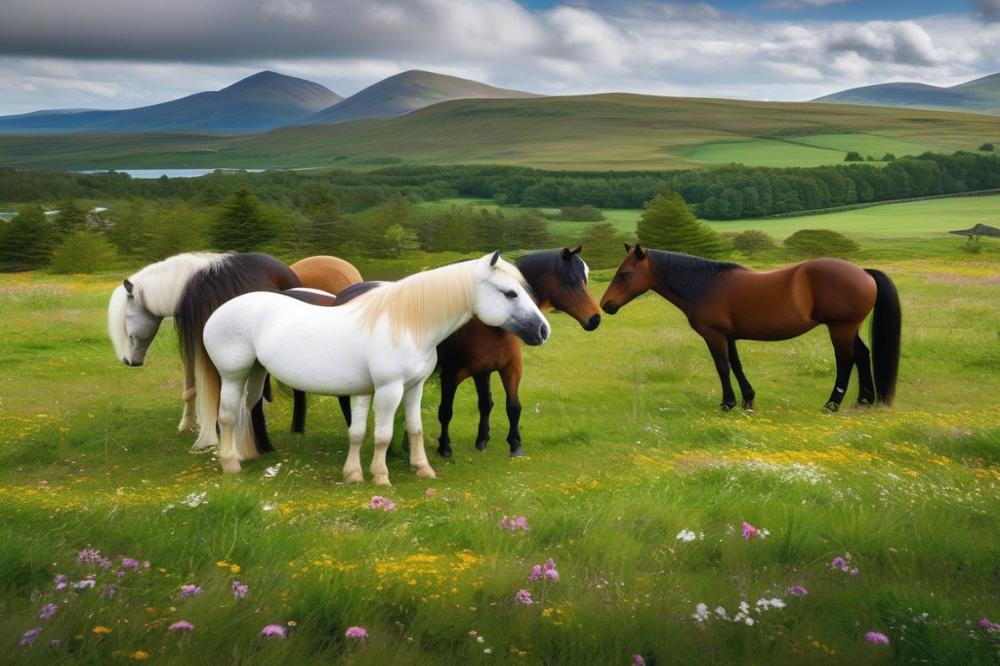Preserving rare pony breeds: conservation efforts in Canada, France, and Beyond
rare pony breeds hold a special place in the world of agriculture and culture. These animals are not just livestock; they embody history, tradition, and the diverse landscapes they come from. Some breeds have existed for hundreds of years, adapting to local conditions and ways of life. Their distinctive traits and characteristics provide insight into the past, offering a glimpse into how people once used these ponies for work and companionship.
Conservation for heritage breeds is crucial. As modern farming practices evolve, many of these breeds face the threat of extinction. Their numbers dwindle as demand shifts towards more commercially viable animals. Losing them means losing a part of our heritage, as well as unique genetic diversity that can benefit future generations. Protecting these breeds, however, goes beyond just numbers. It involves nurturing their stories, ensuring that they remain part of our culture.
Focus has shifted in several countries, particularly Canada and France, to protect these magnificent creatures. In Canada, programs aimed at promoting rare breeds have emerged. Farmers and enthusiasts are working together to keep these ponies thriving. In France, similar endeavors are happening, with initiatives to raise awareness and educate the public about the importance of preserving these animals. This collaboration often extends beyond national borders, as conservation efforts grow increasingly global. Communities everywhere play a role, reminding us that saving these breeds can unite people with a common cause. By recognizing their significance, we can all contribute to preserving a vital piece of our agricultural and cultural future.
Understanding Rare Pony Breeds

Rare pony breeds are defined as those with small populations. Their numbers are often limited due to various factors, including changing agricultural practices and competition with more common breeds. Typically, these ponies exhibit distinctive traits, such as unusual colors or unique size ranges. They may also possess special abilities suited for certain tasks, making them valuable in specific contexts.
In Canada, notable examples include the Newfoundland Pony. This breed has a strong connection to the region’s history and features a sturdy build. In France, the Breton Pony stands out. Known for its hardiness, this pony works well in agriculture and has a rich heritage in local farming practices. Both breeds showcase the diversity found in small equine populations.
Ponies and miniature horses hold significant places in cultural heritage. They often symbolize connection to rural life. Communities have relied on these animals for work and companionship for generations. Symbols of tradition, they appear in festivals, parades, and educational events. These activities foster appreciation and understanding of the roles that ponies have played throughout history.
Conservation Efforts in Canada

In Canada, various initiatives work to protect rare pony breeds. Organizations dedicate themselves to equine conservation in different provinces. These groups focus on education, breeding programs, and public awareness. Their goal is to maintain the genetic integrity of these animals.
One notable organization is the Canadian Pony Club. This group operates across the country and promotes responsible pony ownership among youth. They teach proper care and management practices, which helps young riders build strong connections with these animals. Another important entity is Equine Canada, which supports horse-related activities and encourages best practices in breeding.
Conservation strategies often prioritize sustainable practices. By promoting genetic diversity, these efforts help prevent inbreeding. Maintaining a wider gene pool ensures healthier populations in the long term. This approach not only benefits the ponies but also enhances the overall ecosystem.
Many pony breeds face challenges, such as habitat loss and dwindling numbers. Limited genetic diversity can lead to serious health issues over time. Therefore, successful breeding programs play a crucial role in preserving these unique equines. Each program contributes to building a stronger future for rare ponies in Canada.
Conservation Efforts in France
National and regional strategies play a crucial role in preserving pony breeds in France. The government has outlined specific plans to support these animals. Regional councils work alongside national authorities to create effective initiatives. These strategies focus on habitat preservation and breeding programs. They also emphasize education about the importance of these animals. This collaborative approach ensures broader support from local communities.
Heritage breeds hold a significant place in French agricultural practices. Many farmers integrate these animals into their operations. Such breeds contribute to maintaining biodiversity on farms. Each pony carries a history and unique traits that enrich the landscape. Their presence fosters a connection between tradition and modern agriculture.
Collaboration between government bodies and non-governmental organizations is vital. NGOs often bring additional resources and expertise to the table. Together, they work to develop outreach programs that raise awareness. These efforts highlight the benefits of preserving rare breeds. Community involvement strengthens these initiatives, creating a shared sense of responsibility.
Incentives for breeders and stakeholders motivate participation in conservation efforts. Financial support is available for those who commit to preserving these ponies. Grants and subsidies can help cover costs associated with breeding and care. The government encourages best practices through recognition programs as well. Such measures foster a supportive environment for those involved in preservation.
Global Perspectives on Pony Preservation
Preservation efforts extend beyond Canada and France. Countries around the globe recognize the importance of saving their unique pony breeds. In the United Kingdom, for instance, communities have rallied around the protection of the Exmoor pony. Similarly, Spain is dedicated to conserving the Asturcón, a small, hardy horse with roots tracing back to prehistoric times.
Comparing strategies reveals both commonality and divergence. Canada often focuses on habitat protection and breeding programs supported by local organizations. France, on the other hand, emphasizes cultural heritage in its conservation efforts, linking ponies to local traditions and economies. Collaboration among governments, breeders, and conservationists is vital in both nations.
Other nations, like Iceland, employ a strict import policy. This prevents genetic dilution of their native ponies, ensuring that the unique traits are maintained. Germany shares a similar outlook, promoting sustainable breeding practices among local breeders. Their varied approaches reflect the diverse challenges faced by each country.
International collaboration plays a crucial role in maintaining biodiversity. Knowledge sharing can enhance breeding techniques and habitat conservation. Working together leads to a powerful support network. By combining resources and expertise, countries can make significant strides in preserving these magnificent animals.
Ultimately, the global effort to conserve rare pony breeds highlights the interconnectedness of ecosystems. Every action in one country influences efforts elsewhere. By joining forces, nations can better combat threats to equine biodiversity.
Challenges and Solutions in Pony Conservation
Many threats face rare pony breeds today. Habitat loss poses a major issue. Urban development, agriculture, and climate change are consuming the open lands where these animals thrive. As their environments disappear, pony populations decline. In some regions, this decline has become alarming. These unique breeds are disappearing faster than we realize.
Animal welfare concerns also complicate conservation efforts. Insufficient food, poor living conditions, and inadequate healthcare can harm these animals. Caring for rare breeds often requires special attention. When organizations and farmers work together, they can offer better support for these vulnerable ponies.
Innovative solutions play a crucial role in this fight. Community awareness programs share knowledge about the importance of preserving these breeds. Educating the public helps foster appreciation and support. Additionally, breeding programs focused on genetic diversity help maintain healthy populations. Collaborative efforts among breeders can create a more resilient gene pool.
Farmers and conservationists are stepping up their efforts. They implement sustainable practices that align with animal needs. Creating protected areas for grazing and breeding ensures a safe environment. These strategies not only benefit ponies but also promote biodiversity in the ecosystem.
Technology is opening new doors as well. Genetic mapping can identify important traits in pony breeds. This information aids in breeding decisions that enhance health and adaptability. Using modern tools alongside traditional methods can yield important benefits for conservation efforts.
Future of Rare Pony Breeds
Raising awareness about the value of horse breeds is essential. Many people do not understand the importance of preserving these animals. Education plays a crucial role in this effort. Schools, community programs, and local events can help inform the public. Workshops on the history and significance of these breeds may inspire interest and support.
Strategies for Promoting Sustainable Practices in Horse Breeding
Promoting responsible breeding practices is vital for the future. Breeders should focus on genetic diversity to prevent health problems. Collaboration between breeders and conservation organizations can create a more sustainable model. They can share knowledge about best practices and help each other. Moreover, utilizing technology to track genetic lines can enhance efforts.
Encouraging breeders to adopt eco-friendly policies is equally important. Using local feed and resources reduces the environmental impact. Transitioning to pasture-based systems can benefit the animals and the land. By prioritizing animal welfare, breeders can maintain healthier populations.
Long-Term Vision for Conserving Equine Heritage and Biodiversity
Conserving equine heritage requires a clear vision. Establishing protected areas for rare breeds may help preserve their habitats. Such initiatives can provide safe spaces for breeding and growth. Collaboration among governments, non-profits, and communities is essential to this goal.
Connecting conservation efforts with tourism can create an avenue for funding. Visitors often enjoy learning about unique breeds. Supporting education and outreach programs can foster a sense of responsibility. Together, these efforts can maintain biodiversity for generations to come.
Final Thoughts on Equine Conservation
The preservation of distinct pony breeds is essential for maintaining biodiversity in our ecosystems. These animals contribute to cultural heritage and agricultural practices across various regions. By conserving them, we protect not just the breeds themselves but also the traditions and histories tied to them. The stakes are high. Without intervention, many breeds may vanish, taking with them centuries of genetics and traits that make them special.
Support for conservation initiatives is crucial. Programs in Canada and France play a significant role in sustaining these unique animals. They provide vital resources and education to communities about the importance of preserving these breeds. Involvement from individuals and organizations can amplify these efforts. Donations, volunteering, or spreading awareness can make a meaningful difference.
Appreciating the beauty and diversity of ponies goes hand in hand with active participation in preservation efforts. Whether it’s visiting a local farm, attending events, or simply sharing information with friends, every action counts. Conservation is a collective responsibility that requires everyone’s input. Together, we can secure a future where these magnificent animals thrive.



